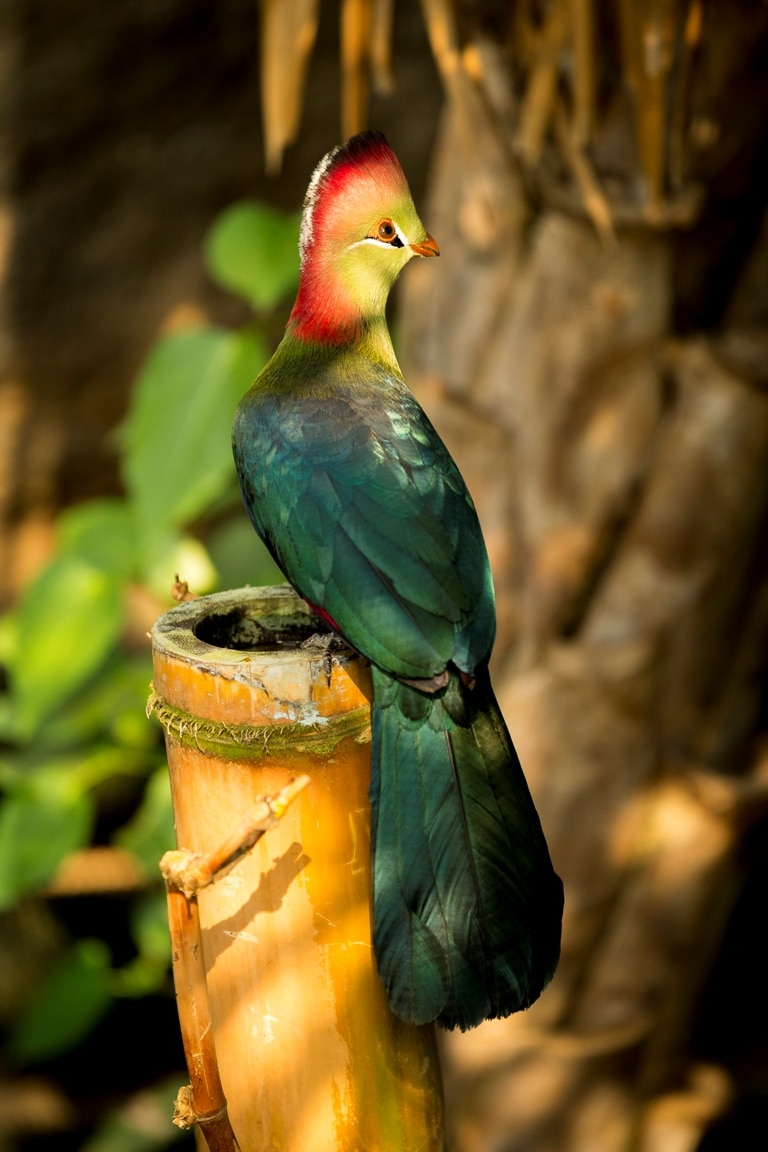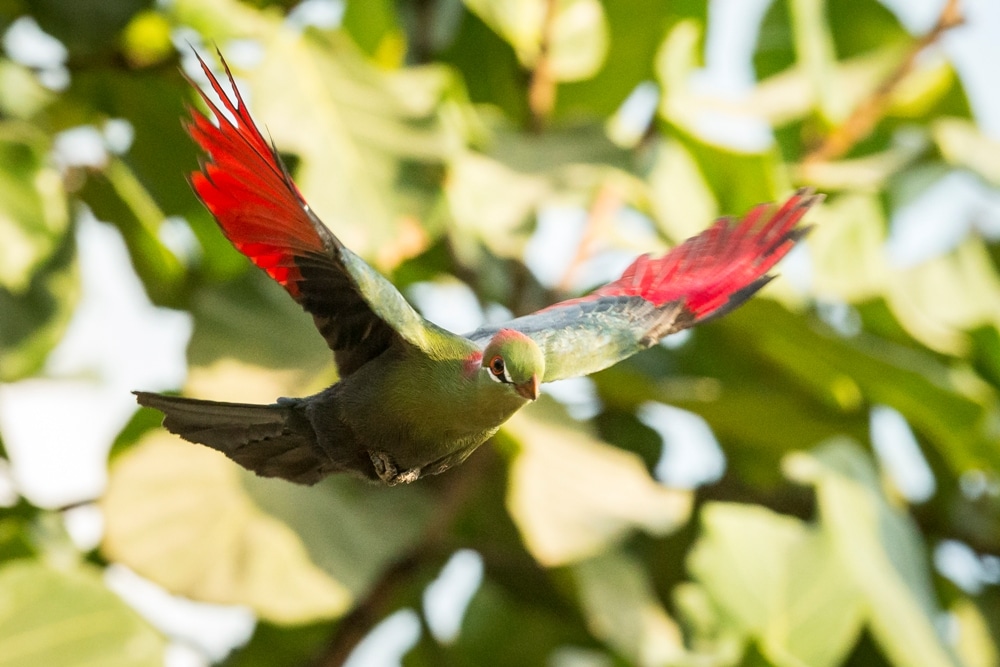Fischer's turaco
Common Name: Fischer’s Turaco
Scientific Name: Tauraco fischeri
Turacos are weak fliers, but their toes are specially arranged, with one which can be moved so it is pointing almost to the front or back of the foot or at a right angle, which helps them to move easily along branches and through foliage.
Turacos are the only species in the animal kingdom known to have copper pigments in their feathers. These pigments give them their bright colours.
Fast Facts
-
Status
Near Threatened
-
Size
40 cm in height
-
Weight
Males: 230–269 g; females: 227–283 g
-
Gestation
22-23 days
-
Young
2 eggs are laid
In the wild
Fischer’s turacos mainly eat fruits, especially figs and berries, but they also eat flower buds and young leaf shoots. They will occasionally eat insects if they come across them while foraging for food.
This species occurs in Kenya, north-eastern Tanzania and southern Somalia. They live in forest and wooded thickets, preferring areas with mature fruiting trees.
Pairs of Fischer’s turacos establish a breeding territory which they will defend fiercely against any mammals which get too close. They build a flat, fragile nest of twigs 3 to 10 metres from the ground in dense tree foliage. These turacos lay 2 off-white eggs which are almost spherical, and which both the male and female help to incubate. When the young hatch out they are covered in a thick coat of dark brown down. The parents feed them on regurgitated food. The young may start leaving the nest to clamber and hop in nearby branches from as young as 10 days old.
African goshawks are known to prey on turacos and their nests.
The main threats to Fischer’s turacos are from trapping for the pet trade and clearance of their forest habitat. They are protected by being on CITES Appendix II, which means that the trade in these birds or any of their parts is restricted. They are also found in at least one National Park.

